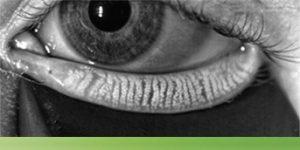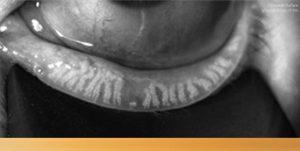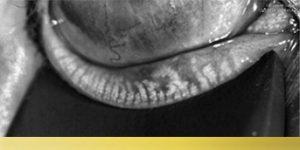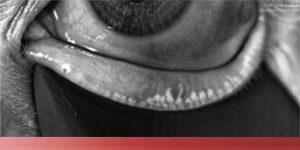DRY EYE AND MGD
Did you know that over 85% of dry eye cases are linked to a condition called Meibomian Gland Dysfunction (MGD)? It’s one of the most common eye issues—and most people have never even heard of it.
Your eyelids contain 20–40 tiny oil glands that help keep your tears from evaporating too quickly. When these glands become blocked or stop working properly, it leads to dry, irritated, and sometimes blurry eyes.
Dry eye symptoms can show up gradually or suddenly—and they’re often mistaken for allergies or eye fatigue. Common symptoms include:
- Red, irritated eyes
- Itching or burning
- Gritty, sandy sensation
- Blurred or fluctuating vision
Thanks to our digital lifestyles, it’s on the rise in all age groups.
Other Contributing Factors to MGD
Along with screen use, several other everyday habits and health conditions can increase your risk of Meibomian Gland Dysfunction (MGD):
Contact lens wear and eye makeup, especially eyeliner applied along the lash line, can clog the openings of your oil glands. If makeup isn’t thoroughly removed before bed, the buildup can block glands over time and lead to inflammation.
There are also medical conditions and medications that may contribute to or worsen MGD, including:
- Rosacea
- Androgen deficiency or menopause
- Sjögren’s syndrome
- Certain medications, such as:
- Antihistamines
- Retinoids (often used for acne or aging)
- Some glaucoma medications
- Antidepressants
- Hormone replacement therapy
If left untreated, MGD can cause long-term damage—including permanent gland loss. That’s why early detection and treatment are key to protecting your comfort and vision.
- Normal Gland Structure
- Significant Gland Loss
- Gland Shortening & Loss
- Severe Gland Loss
The good news? MGD is treatable!
At our office, you have choices! We have the latest in advanced technology including the OptiLight IPL, OptiLift and Lipiflow.
OptiLight IPL: Treat Dry Eye at the Source
If you struggle with red, watery, or irritated eyes, inflammation may be at the root of the problem. OptiLight by Lumenis is the first and only IPL (Intense Pulsed Light) treatment FDA-approved for dry eye due to meibomian gland dysfunction (MGD).
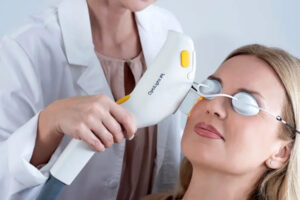 This quick, light-based treatment targets inflammation around the eyes, helping to:
This quick, light-based treatment targets inflammation around the eyes, helping to:
- Reduce redness and irritation
- Improve oil flow from your glands
- Enhance overall tear film stability
Treatments are non-invasive, take just 10–15 minutes, and are done right in our office. Most patients receive a series of 4 treatments spaced over several weeks—and many notice significant improvement in both comfort and vision clarity within the first couple of treatments!
OptiLift: Rejuvenate Your Lids, Improve Your Comfort
As we age, the skin around our eyes can begin to loosen or sag—a condition called lid laxity. This subtle change can make dry eye symptoms worse by leaving the surface of the eye more exposed.
OptiLift is a non-invasive, treatment designed to:
- Tighten and lift the delicate eyelids
- Improve lid position for better tear protection
- Reduce eye exposure and dryness caused by drooping lids
It’s a gentle procedure with no downtime, and it pairs beautifully with our other dry eye treatments. Most patients receive a series of 4 treatments spaced over several weeks. Patients love that it enhances both comfort and appearance.
LipiFlow Thermal Pulsation System
The LipiFlow thermal pulsation system is an FDA approved in-office procedure that applies heat and pulsed pressure to the eyelids to unclog your glands and restore healthy oil flow. The treatment lasts about 12 minutes and studies have demonstrated that the process significantly reduces the signs and symptoms of meibomian gland dysfunction.
Steps to Treatment: Your Personalized Dry Eye Plan
Don’t suffer with dry eyes—get answers and real relief.
Start by scheduling a Dry Eye Evaluation with our team. This specialized visit allows us to pinpoint the underlying cause of your symptoms and create a personalized treatment plan that actually works.
During your dry eye visit, we use diagnostic tools to examine:
- Blink pattern
- Lipid layer thickness (how stable your tears are)
- Presence and health of your meibomian glands
- High-resolution gland imaging (to check for gland atrophy)
- Eyelid closure and seal quality
- Tear Breakup Time (TBUT) – how quickly tears evaporate
- Screening for allergens, bacteria, viruses, and Demodex (mites)
- Ocular surface staining – to detect inflammation or damage
Based on your results, treatment may include:
- OptiLight Intense Pulsed Light Treatment
- OptiLift
- LipiFlow® Thermal Pulsation Treatment
- Prescription drops like Restasis® or Xiidra®
- Specialized lubricating drops
- Omega-3 supplements
- Customized eyelid hygiene routines like warm compresses or eyelid wipes
We’ll guide you every step of the way with a clear recovery plan tailored to your needs—so your eyes stay comfortable, healthy, and protected long term.
